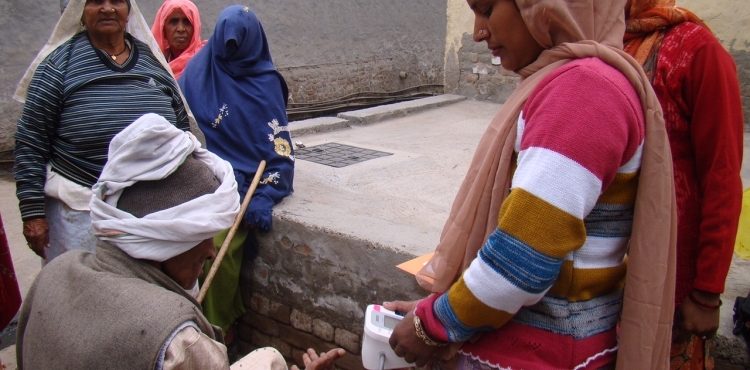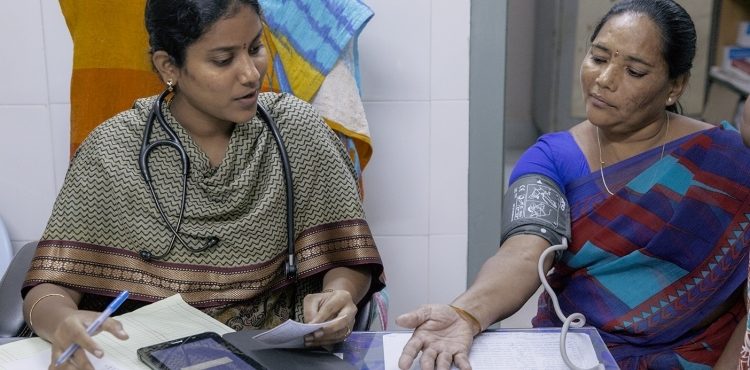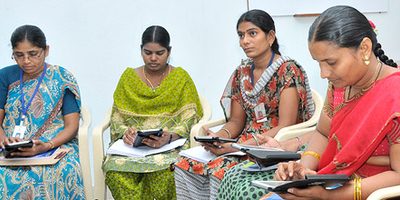In an example of South-South collaboration, researchers from India and China have together discovered cost-effective ways to improve the quality of primary care and clinical outcomes in resource-limited settings which could have major benefits for the general population.
The study result was recently published in Circulation with an invited editorial.
The simplified cardiovascular management program, also known as the SimCard study, was a one-year cluster-randomized controlled trial carried out in 47 villages in Tibet, China and Haryana, India where access to basic cardiovascular disease (CVD) management and appropriate medications were extremely limited.
The study enrolled 2086 (1,036 in China, 1,050 in India) individuals with high CVD risks, defined as over 40 years old with a self-reported history of CVD and a measured systolic blood pressure over 160mmHg. Community health workers (CHWs) were deployed and trained to manage those individuals with the assistance of an Android smartphone app consisting of a guideline-based but simplified CVD management program.
The combined results found in the study strongly demonstrated the effectiveness of this program in increasing the use of the anti-hypertensive medications, with the primary outcome being a net-difference of 25.5%. In China, a significant decrease in systolic blood pressure (-4.1mmHg) and increase in the proportion of taking aspirin (24.5%) were also observed. No actual lifestyle changes were found in both countries.
The study was carried out in 2011 by The George Institute for Global Health at Peking University Health Science Center (TGI @ PUHSC) in collaboration with Tibet University in China, and the Public Health Foundation of India (PHFI) in India. Larger and longer context-specific trials are needed to further refine the program and evaluate the hard outcomes.
Calling for more south-south collaboration
Despite the differences in the healthcare system, socioeconomic environment and culture, India and China both faced similar challenges in CVD prevention and control such as the rising burden of CVD, large urban-rural health disparities, limited resources and capacity.
Dr. Dorairaj Prabhakaran, Co-Investigator of the study in India and Vice President of PHFI, said that perception was one of the biggest challenges in combating chronic diseases like CVD and needed to be overcome. “People think chronic diseases are only problems for the rich, but we now know, having done this study in poorer settings that hypertension is a big problem. It’s affecting everyone in the population.”
“The study was the first dual-country trial of its kind worldwide and presented a good example for other collaborations between the developing countries in view of the huge synergy recognized and its inexpensiveness and sustainability. We should pool our resources together and collaborate more on areas of common interests in the future.”
Customized community-based intervention
As chronic disease burden has been significantly increased over the past decades, delivery of medical care has also changed from individual to population and community-based healthcare.
“Both population-based and high-risk strategies are needed for prevention and control of chronic diseases like CVD,” said Professor Lijing Yan, Principal Investigator of the study and Honorary Professorial Fellow at TGI @ PUHSC. “In resource-limited settings, it would be highly cost-effective if we could adapt the high-risk approach first and then integrate the strategies recommended by guidelines.”
A simplified ‘2+2’ intervention model, which consisted of two medications (blood pressure lowering agents and aspirin) and two lifestyle modifications (smoking cessation and salt reduction), was developed. The model was based on the international and national clinical guidelines for CVD management so that it can be easily implemented and incorporated into the existing local healthcare system as well.
The interventions were carefully tailored to the local cultures with strong support from local governments. For example, in Tibet, special education was carried out to alleviate concerns among Tibetan patients against western medicines.
The role of community health workers (CHWs)
Professor Yan said this study added to evidence demonstrating the potential effectiveness of CHWs in shifting and sharing the tasks of healthcare professionals, which can help reduce the cost of healthcare for individuals.
“Reliance on the overburdened and relatively small number of specialists to target the high-risk people in these areas is not feasible or sustainable. We need to look at models of care which can be inexpensive, accessible and available to everyone,” said Professor Yan. “CHWs are the key components of carrying out such kind of population-based strategies for CVD prevention and control, and can make things available at the doorstep.”
As a result, although no actual lifestyle changes were found, the intervention was effective in changing both the physician and patients’ behaviors in terms of medication prescription and use, as well as a potential to improve clinical outcomes.
The power of mobile technology
Dr. Maoyi Tian, senior research fellow at TGI @ PUHSC, said the smartphone-based electronic decision support system (EDSS) assisted the CHWs to provide standard and prompt care for the first time in these poorer settings.
“Preliminary results from the study have indicated that the EDSS has a large potential to assist the grass-roots level healthcare providers in clinical decisions and patient management in a highly efficient, cost-effective and time/energy-saving way,” said Dr. Tian.
“When implementing the study, it was also very encouraging to see that the CHWs, no matter whether they were young or senior, were willing and able to use the mobile devices.
“For the next steps, we should harness it and implement it on a larger-scale. We will be keen on improving it to a patient-centered design as well as link with local electronic health record system.”











